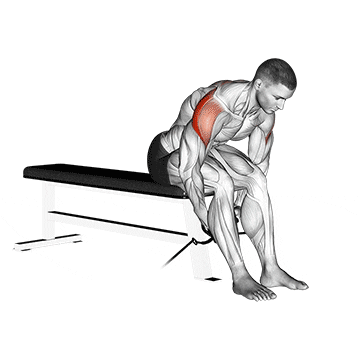The Cable Seated Rear Lateral Raise is a strength training exercise that targets the rear deltoid muscles located at the back of the shoulders. This exercise helps to improve shoulder stability and strengthen the muscles that are often neglected in regular shoulder workouts.
How to perform
To perform the Cable Seated Rear Lateral Raise, follow these step-by-step instructions:1. Start by sitting on a bench or chair facing a cable machine with a low pulley attachment. Adjust the weight on the machine according to your fitness level.
2. Grab the handle attached to the cable machine with your left hand, palm facing downward.
3. Keep your back straight and lean slightly forward from the hips, maintaining a slight bend in your elbow.
4. Exhale as you raise your left arm out to the side, keeping it in line with your shoulder and parallel to the ground. Your elbow should be slightly bent throughout the movement.
5. Hold the top position for a brief pause to feel the contraction in your rear deltoid muscle.
6. Slowly lower the weight back to the starting position, inhaling as you do so. Make sure to control the movement to avoid swinging the weight.
7. Repeat the exercise for the desired number of repetitions on the left side before switching to the right side.
Tips:
- Keep your core engaged and your back straight throughout the exercise to maintain good posture.
- Focus on contracting the rear deltoid muscle as you lift the weight, rather than using momentum.
- Avoid using heavy weights that compromise your form. Start with a lighter weight to ensure proper technique and avoid injury.
By incorporating the Cable Seated Rear Lateral Raise into your shoulder workout routine, you can effectively target and strengthen the rear deltoid muscles for a well-rounded and balanced shoulder development.
Equipment required
Cable
Cable equipment consists of adjustable pulleys attached to weight stacks that allow for resistance training. This equipment is commonly used for strength training exercises that target various muscle groups in the body, such as chest, back, arms, and legs. Cable equipment provides a versatile and functional way to perform exercises that mimic real-life movements, improving muscle endurance, stability, and coordination.


